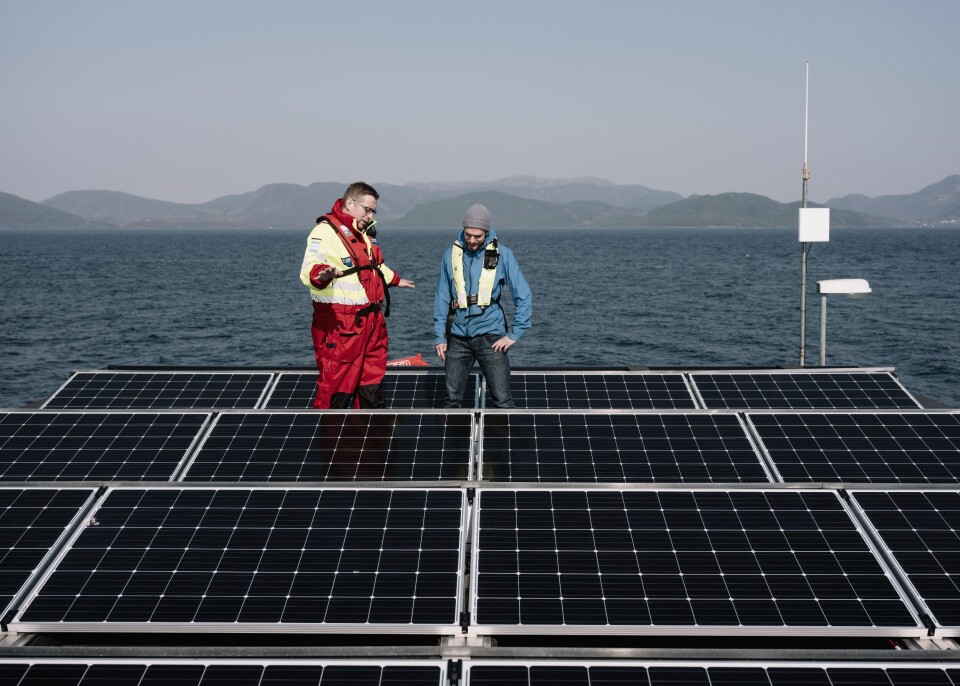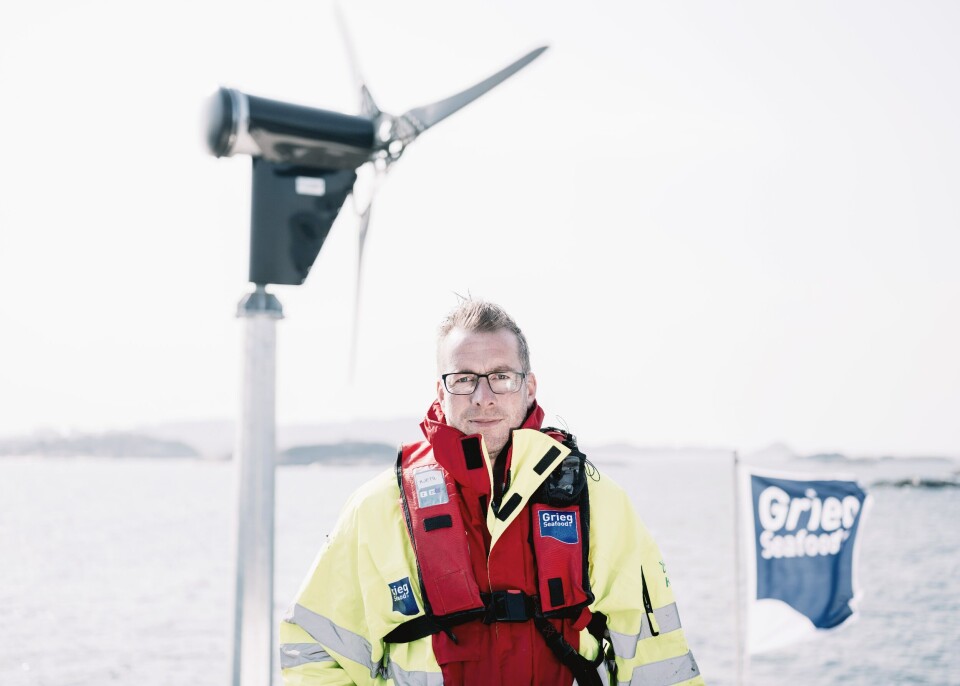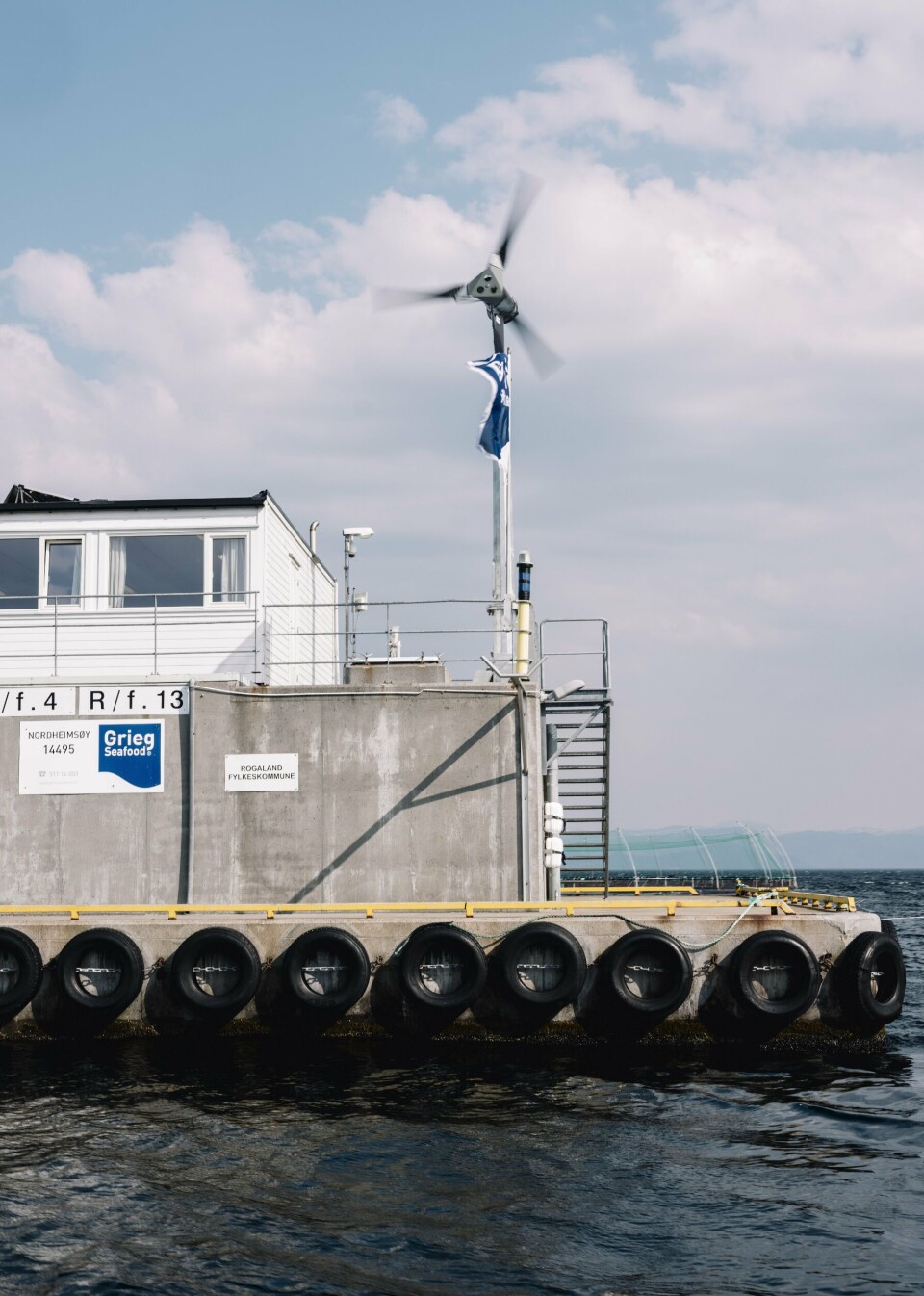
World-first as Grieg installs renewables at salmon farm
Grieg Seafood has become the first salmon farmer to install a wind turbine and solar panel array at a salmon farm, to reduce the use of a diesel generator.
The renewable energy technology is being used at by Grieg Seafood Rogaland at its Nordeimsøyna site in Finnøy municipality, Norway, and was the idea of University of Stavanger Masters student Helleik Syse.
“The wind turbine, the solar panels and the battery bank at the plant allow us to save about 36,000 litres of diesel a year,” said Grieg Seafood Rogaland’s sea production manager Kjetil Ørnes in a press release.

Panels on feed barge roof
The solar panels are located on the roof of the feed barge at the site and the wind turbine is on the side of the vessel. A battery bank stores the energy from the turbine and solar panels and enables the company to optimise the diesel unit when it is in operation.
“When we finish the working day, we can turn off the diesel generator. The remaining 16 hours of the day the battery bank alone supplies us with the necessary energy,” said Ørnes.
The project will reduce the site’s emissions of CO₂ by 98 tonnes.
The idea came from former student Syse and former associate professor Siri Kalvig at the University of Stavanger (UiS). On the team, they had the renewable company Gwind, a spin-off of research at UiS.

Exciting to see results
“An increasing number of fish farms are connected to shore power, but not all sites are well suited for power cables. This project tests whether wind turbines and solar cells can be another solution,” said Syse.
He wrote his thesis with Grieg Seafood in 2016. One year later, the company decided to realise the pilot. Syse is now an advisor at UiS.
“It is really good to see the wind turbine and solar cells from the Master’s thesis realised. It will be exciting to see the results over time,” said Syse.
Most of Grieg Seafood Rogaland’s sites are connected to shore power. Nordheimsøyna is one of five facilities that do not have suitable location for power cables.
30% emissions reduction
“Although farmed salmon is already one of the most climate-friendly animal proteins we can eat, we must also take our share of the responsibility for cutting climate emissions and achieving the goals of the Paris agreement,” said production manager Kjetil Ørnes.
Grieg Seafood, which also farms salmon in Shetland and Canada, aims to cut greenhouse gas emissions by 30% per kilo of salmon before 2030.
“It is fun to test out ideas from young, wise heads. We depend on them to find the solutions that will enable us to achieve the goals we have set,” concluded Ørnes.























































